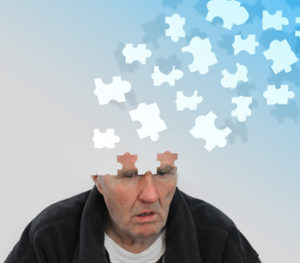Can COVID-19 Impact the Brain?
 New information is emerging in COVID-19 hospital research showing that patient brains are negatively impacted in about 20% of all cases.
New information is emerging in COVID-19 hospital research showing that patient brains are negatively impacted in about 20% of all cases.
A growing portion of those affected by COVID experience temporary episodes of cognitive decline or decompensation. This appears to be especially true of those with severe disease symptoms, especially the elderly, who required intensive care hospitalization.
One example of cognitive decompensation is delirium, often experienced with lapses in awareness and mental fortitude. Independent of COVID cases, this is actually an extremely common symptom during or after any post-intensive care experience.
“Delirium is a state of confusion that commonly occurs when patients are in the ICU,” says Dr. Lauren Ferrante, a Yale Medicine pulmonologist and critical care doctor. “The patient may not be able to think clearly, may not understand what is happening around them, and may see or hear things that are not there.”
Brain Dysfunction and delirium is seen in roughly two out of three patients in ICU settings and closer to 70% for patients placed on ventilators.
The symptoms of delirium include but are not limited to:
- Inability to think clearly
- Trouble paying attention
- Difficulty understanding what’s going on around them
- Seeing, imagining or hearing things that are not there
There are many reasons why delirium may occur in the brain while being sedated on a ventilator including:
- Extreme fatigue
- Oxygen deprivation in the brain during labored breathing
- Severe infections, pain, or medical illnesses
- Alcohol, sedatives, medications, or painkillers—or withdrawal from those substances
Although brain function disturbances have been reported in recovering COVID-19 patients, the brain dysfunctions seem primarily linked with the affectation of the disease on the body, rather than the disease itself, which primarily affects the lungs and heart.
Long hospital stays, rigorous treatments, and the psychological duress of being in prolonged hospitalized isolation are thought to play a more significant role in disorienting the brain’s senses than COVID-19. However, older age increases the risk of delirium, too, and seniors are experiencing COVID-19 at much higher rates than younger adults.
Maintaining brain function is indispensable to good health. Neurologically based conditions including memory loss, gait, balance, and insomnia can be helped through neurofeedback. Call us – INDY Neurofeedback is here to help. It is never too late to address your brain’s health.

 The medical community has known for the past 30 years that spending large amounts of time in front of a TV or computer screen had a negative effect on a child’s developing brain – but specifically what parts of brain development were affected and for how long, have not been well researched or understood.
The medical community has known for the past 30 years that spending large amounts of time in front of a TV or computer screen had a negative effect on a child’s developing brain – but specifically what parts of brain development were affected and for how long, have not been well researched or understood. These measurable links remained strong even after researchers accounted for other factors that can influence development, such as parents’ education, children’s physical activity levels, and whether parents read to their children regularly.
These measurable links remained strong even after researchers accounted for other factors that can influence development, such as parents’ education, children’s physical activity levels, and whether parents read to their children regularly. Over five and a half million Americans are living with the neurodegenerative disease today. According to the Alzheimer’s Association (www.alz.org), medical researchers predict that by 2050, 14 million people in the U.S. will require full-time care for Alzheimer’s disease. That number is equal to the populations of New York City, Los Angeles and Chicago combined.
Over five and a half million Americans are living with the neurodegenerative disease today. According to the Alzheimer’s Association (www.alz.org), medical researchers predict that by 2050, 14 million people in the U.S. will require full-time care for Alzheimer’s disease. That number is equal to the populations of New York City, Los Angeles and Chicago combined. According to the National Institute of Health, childhood diagnoses of ADHD (Attention Deficit Hyperactivity Disorder) have climbed sharply in the last two decades. The Center for Disease Control and Prevention says that ADHD diagnoses jumped over 40% between 2003 and 2011. In 2016 alone more than 9% of children between the ages of 2 and 17, a total of more than 6 million children, were diagnosed with ADHD.
According to the National Institute of Health, childhood diagnoses of ADHD (Attention Deficit Hyperactivity Disorder) have climbed sharply in the last two decades. The Center for Disease Control and Prevention says that ADHD diagnoses jumped over 40% between 2003 and 2011. In 2016 alone more than 9% of children between the ages of 2 and 17, a total of more than 6 million children, were diagnosed with ADHD. We’ve long heard about head trauma due to playing rough sports like rugby and football. But what about soccer? Of particular concern is “heading”, or repeatedly using the head to forward the ball. Studies have found that frequent heading is a common and under-recognized cause of concussion symptoms and may actually cause more damage than the impact from unintentional head-to-head collisions.
We’ve long heard about head trauma due to playing rough sports like rugby and football. But what about soccer? Of particular concern is “heading”, or repeatedly using the head to forward the ball. Studies have found that frequent heading is a common and under-recognized cause of concussion symptoms and may actually cause more damage than the impact from unintentional head-to-head collisions.